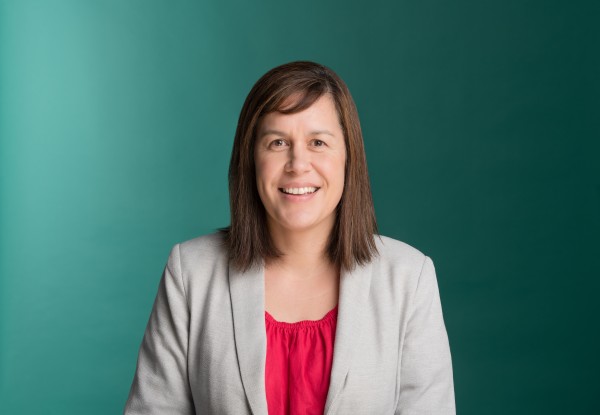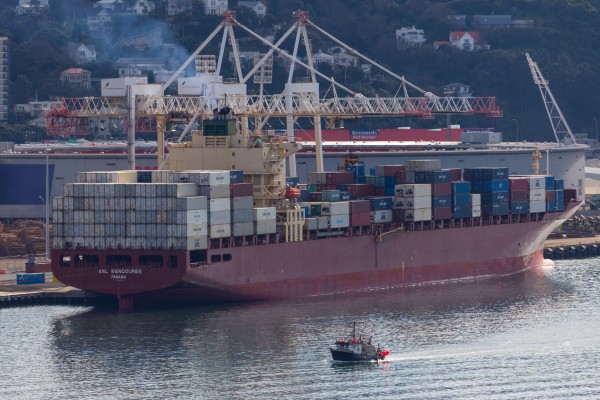Crown entities and their monitors: A relationship that takes work
MartinJenkins Director Natasha Kuka has some advice on how a Crown entity’s leaders and its monitoring agency can work constructively together.
In 1989, GST was raised to 12.5%, TV3 was launched, and a new form of public organisation was established – the “Crown entity”.
Crown entities are a powerful mechanism for implementing and delivering government functions and services, and their arrival in the late 1980s marked a recognition that some government functions are best delivered with a degree of independent decision making. The rationale was that, operating at arm’s length from the government, these entities could bring additional focus and specialist expertise to some of the key tasks of the state.
In Aotearoa 35 years later, we now use Crown entities to deliver a wide range of functions and services across some key sectors, like transport, health, and education. At last count we had 87 of them (not counting school boards), spending around a third of all allocated government funding – nearly $68 billion in 2023/24.
In part, these Crown entities are a form of devolution of control, but it’s still important that their performance and use of public funds is closely monitored. It’s tricky getting the balance of independence and accountability right, and the monitoring relationship hasn’t always functioned smoothly.
In this article I’ll look at the central relationship between the Crown entity and its monitoring department, and specific pitfalls and success factors. Funnily enough – and as with many other relationships encountered in life – success in this relationship seems largely to come down to understanding each other’s needs and communicating well.

Natasha Kuka – Ngāiterangi, Ngāti Ranginui
A complex monitoring network
A 2022 report from the Auditor-General observed that:
“The network of roles, responsibilities, and relationships between Ministers, monitoring departments, Crown entity governing boards, and Crown entities is complex.”
Anyone who’s been involved with Crown entities will appreciate just how understated that use of “complex” was there. It’s a bit like saying Irene van Dyk was an OK netball shooter.
There’s good reason for that complexity – it’s driven not only by the independent status of Crown entities but also by how the level of independence varies across different categories of Crown entity.
The minister sets the Crown entity’s priorities and appoints its board. The board’s governance role includes setting the Crown entity’s strategy and monitoring its performance, as well as appointing the chief executive. The monitoring agency is there to represent the owner of the entity – the Crown – and provide confidence that the board is governing and monitoring well.
The monitor also supports the process for appointments to the board, including the induction of new board members. In this induction stage the monitor plays an important role making sure board members are clear about their roles and what’s expected of them, and clear about how the monitoring relationships will work.
For this complex monitoring network to function well, good relationships and clear communication are vital. And each player not only needs to do their own job effectively, they also need to help the other components of the network succeed in theirs.
Respecting the Crown entity’s independence
The original thinking behind the Crown entity model recognised that some activities benefitted from being distant from political decision-making. This has been used to protect ministers as well as to protect some decisions from ministers.
Since that time the model has evolved through practice and culture, and we have seen examples of where the original strict separation hasn’t suited the circumstances. But a clear understanding of the underlying rationale for Crown entity delivery as a preferred institutional form is still important. The monitoring agency will always need to strike a skilled balance between respecting the Crown entity’s statutory independence and protecting the interests of the minister and the government of the day.
The monitor will also need to be well attuned to the type of Crown entity it’s dealing with. ICEs – “independent Crown entities” – are the most independent, including for example the Commerce Commission and the Broadcasting Standards Authority. ICEs aren’t required to follow, or even to consider, the policies of the government of the day. By contrast, “Crown agents”, like Waka Kotahi and the Environmental Protection Authority, must follow government policy and ministerial directions.

In Aotearoa we've assigned the job of regulating our coastal and inland waterways to a Crown entity, Maritime NZ. As a "Crown agent", Maritime NZ can be directed to follow the policy of the government of the day.
Leaders of Crown agents and other less independent Crown entities may sometimes strain against and overstep the limits of their independence by criticising the government and its policies. They may expect to have more autonomy and freedom to criticise than they in fact do. We’ve seen several cases where board members have resigned or had to answer to the government of the day because they expressed views out of step with government direction or policy.
Creating a shared understanding of how the Crown entity will achieve its priorities
The Auditor-General’s 2022 report on the Crown entity monitoring system emphasised that a Crown entity and the monitor should discuss the organisation’s priorities and objectives together, to ensure both sides are clear about how the Crown entity intends to achieve them.
However, my experience is that the monitor also needs to give the Crown entity appropriate space to decide how to give effect to the priorities, within the boundaries of the enabling legislation.
The Crown entity and the monitor need to have a clear, shared understanding of what good performance looks like, and also need to work together to develop a monitoring framework that fits the organisation and its particular functions.
Sometimes Crown entities have narrow roles that enable them to focus on delivery, but others have a complex mix of functions to carry out. This can include quasi-judicial and investigative functions, and monitoring activity against a set of standards, and in some cases bringing prosecutions. A monitoring framework needs to be up to the job in each case. For ICEs and their independent functions, the monitoring may focus on quality and process rather than the substance of decision making.
I helped lead MartinJenkins’ review of Waka Kotahi (NZTA) in 2019, and this showed that funding and infrastructure functions had been allowed to overshadow an important regulatory function. Also, the poor relationship between entity and monitor was a barrier to corrective mechanisms. Our review found that:
“The fractious nature of the relationships between the Ministry’s monitoring team and NZTA leadership acted against the effective and timely provision of information to the Ministry to enable it to be more categorical in its assessments and did not encourage the NZTA to take seriously the results of the Ministry’s assessment.”
Understanding each other’s functions and context
Despite over 30 years of experience, monitoring is still a maturing practice in Aotearoa, and some government agencies have less capability and experience in this than others. This might surprise those who aren’t close to this part of public-service delivery – but I would observe that this lack of maturity is, in part, because it’s often not prioritised as highly as other functions an agency has to perform.
Monitoring functions also often get shunted around. Sometimes the monitoring function at the agency will sit together with the agency’s policy function. But other times there will be a specialist monitoring unit separate from the agency’s policy people, and here the Crown entity may find that their monitor has a limited understanding of the entity’s particular line of work.
In those cases it’s important for the Crown entity’s leaders to work hard to help the monitor understand the organisation’s work and context. The Crown entity should consider inviting the monitoring personnel inside the tent – for example, inviting them to attend meetings of significant work programmes.
On the monitor’s side, it needs to have appropriate influence with the Crown entity, and that depends a lot on having the right relationships with it at different organisational levels. Ideally the monitor will have parallel relationships with the Crown entity at all key levels, including board, CEO, and corporate functions, particularly finance and reporting.
The monitor’s statutory relationship is with the board, and the monitor and board will need to agree on practical arrangements for the monitor to work with the Crown entity’s executive.
Sharing information often and early
The monitor’s views should be informed by the reporting provided by the Crown entity, as well as the monitor’s own monitoring framework. But Crown entities aren’t always incentivised to flag issues, and may worry about attracting additional scrutiny. This can create some significant hurdles for the monitor, particularly if the relationship is already strained.
All Crown entities are responsible for reporting on their performance to the minister. For Crown entity leaders, being open with the monitor and sharing information often and through different channels will be welcomed and will build your relationship with the monitor. The more the monitor understands your business, the better – particularly around your costs and finances. As well as the formal mechanisms for information sharing, like annual and quarterly reports, it’s a good idea to be proactive about also using informal mechanisms for sharing information.
Being proactive about sharing information includes flagging significant risks and problems early on. If a problem is about to come to a head, particularly if it will generate publicity, it’s a good idea to let both the monitor and minister know, to avoid them being blindsided. They will want to be well primed with information about the problem, and especially about what the Crown entity is doing to manage it.
The flow of information and the proactive communication need to go both ways. When the monitoring agency thinks the Crown entity needs to make some adjustments or corrections, it’s important that it provide the Crown entity with all the information and guidance it needs to do this. The OAG’s 2022 review of Crown entity monitoring said that often monitoring reports did not provide enough information to properly assess the entity’s performance.
Monitors as an important source of support
Effective government monitoring of Crown entities includes supporting them to succeed. As well as being a check on the Crown entity, the monitoring agency can also provide it with important support – including supporting it to build capability within its organisation, helping it with specific steps like Budget bids, and relaying the Crown entity’s needs and interests to the minister.
At MartinJenkins, as well as seeing cases where the relationship broke down, we've also seen some very positive relationships between Crown entity and monitoring agency, where they shared information and worked together to face some critical challenges.
For example, in one case an ICE and its monitor collaborated well to fully analyse and understand the Crown entity’s costs, with a view to seeking additional funding through a Budget bid so the organisation could properly manage demand and volumes. In that case, providing the monitor with more and better information helped lead to increased government investment in the Crown entity’s work. This kind of successful collaboration is particularly important if the Crown entity is critical to implementing a set of government policy decisions efficiently and effectively.
Surviving in isolation – flourishing together
I’m reminded here of a favourite whakataukī:
“Nā tō rourou, nā taku rourou ka ora ai te iwi”
“With your food basket and my food basket the people will thrive.”
In this new context of a shrinking fiscal food basket, this whakatauki reminds us that while working in isolation we might be able to survive, by working together we will collectively flourish. It applies as well to the intricacies of Crown entity monitoring as it does to other areas of life.
You can receive our insights delivered directly to your inbox